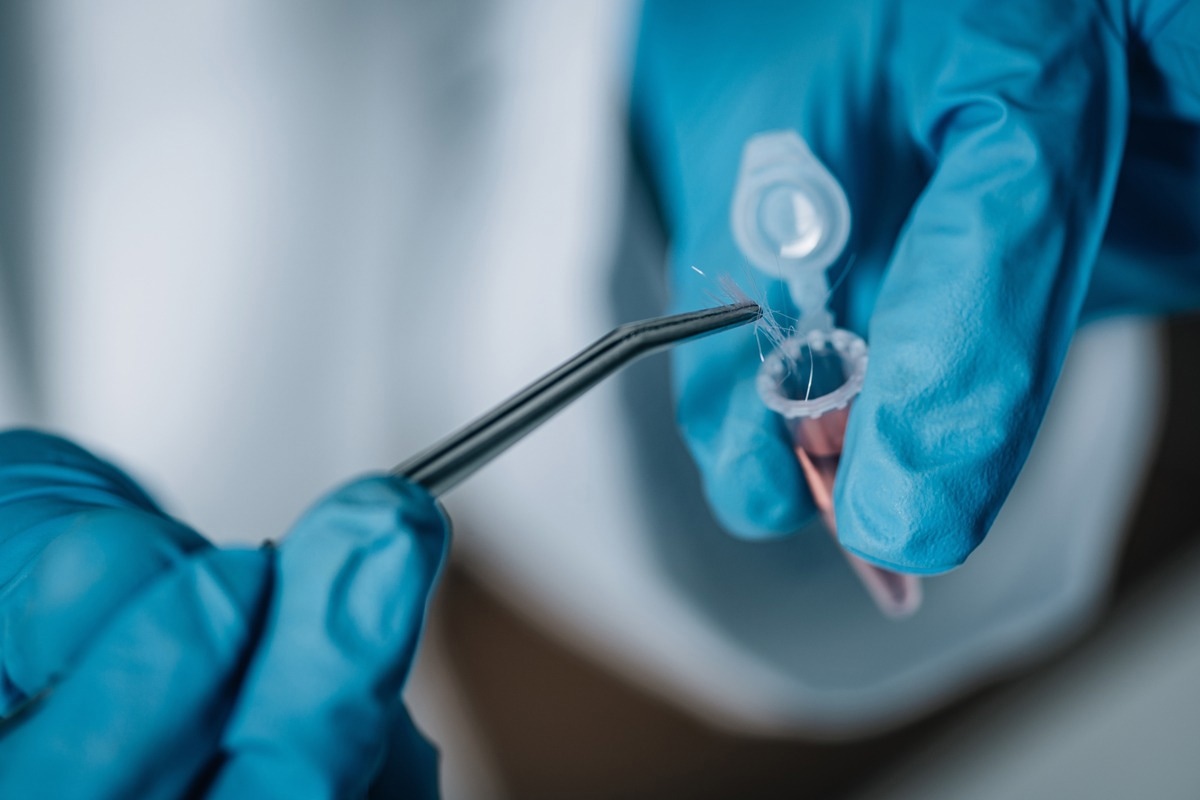The emerging field of omics is a rapidly growing and evolving area of science that brings together experts from different disciplines, such as genomics, epigenomics, metabolomics, proteomics, and transcriptomics, to answer some of science's most pressing challenges. The collaborative effort between these fields helps scientists view biology from an unprecedented standpoint.

Image Credit: Vladimka production/Shutterstock.com
The term "Forens-Omics" was first used recently to describe the global application of various omics disciplines collaboratively to address challenges in forensics as well as archaeology. A team at the University of Central Lancashire launched a research project in 2019 that seeks to address aging phenomena in forensics with the application of "Forens-Omics." The four-year project, funded by UK Research and Innovation (UKRI), is helping to develop the emerging field of "Forens-Omics," which we discuss below.
Using Omics to Overcome Forensic Challenges
In forensics, postmortem interval (PMI) and age-at-death (AAD) estimations present two of the biggest challenges currently facing the sector, particularly in cases involving skeletonized adult remains. Current methods that rely on visual examinations limit the precision, accuracy, and reliability of these estimations. Visual methods also face the drawbacks of poor reproducibility and rely on the examiner's expertise in performing the task. It also relies heavily on the conditions of the bones available for investigation. This means that the use of PMI and AAD is limited, preventing it from reaching its full potential in helping to identify victims successfully.
Biomolecules offer an opportunity to gather fine-grain details about human skeletal remains. DNA, proteins, lipids, and metabolites are abundant in bone and remain in the tissue for a long time postmortem. Therefore, the analysis of these biomolecules offers a window into important time-dependent biological processes that may be significant to forensic investigations. For example, DNA methylation measures can assist in AAD estimations, and the analysis of metabolites and lipids can help with estimations of PMI.
Developing Advanced PMI and AAD Tools
To develop more accurate and reliable tools to estimate PMI and AAD than are currently available, the team at the University of Central Lancashire previously collaborated with various institutions in the US (Texas State University-San Marcos, University of Eastern Piedmont, Sam Houston State University, University of Tennessee, and Lincoln Memorial University) to collect and sample a significant number of human bones. The sample of human bones has a wide age range and variable PMI (from months to more than forty years). DNA is extracted from the sample of bones collected. Proteins and metabolites are also being collected, and high-throughput analyses are being performed on each biomolecule class extracted to calculate quantifiable features associated with both PMI and AAD.

Image Credit: Microgen/Shutterstock.com
Scientists from the multi-institutional team use the data they recover from the samples alongside advanced bioinformatics tools. The hope is that they will develop an accurate mathematical model that will reliably and precisely estimate PMI and AAD and that will also predict the predictive power of the established methodology. It is also hoped that the data will clarify which biomolecules or combinations of biomolecules are most useful in providing accurate estimations.
These newly identified biomarkers will be fundamental in allowing the team to establish a commercial toolkit that forensic examiners could easily use. The team also envisions the resultant platform being used by police officers and scientific researchers. If widely available, such a tool would allow forensics teams, police, and academic research to rapidly establish unbiased and reliable estimations of both PMI and AAD. Additionally, the team expects that "non-omics" experts will be able to use the kit to obtain key investigative clues that will be important to resolving crimes.
The Impact of the Emerging ForensOmics Field
The impact of this emerging field, particularly due to the University of Central Lancashire research project, will be significant for the academic, commercial, and public sectors. For example, the team plan on sharing the knowledge generated during their project to allow for additional meta-analyses to be performed, therefore, maximizing the academic value of their work. The forensic and archaeological fields will be positively impacted, as will the biological and medical fields. Additionally, our understanding of aging and age-related diseases will grow due to this research.
The research from the University of Central Lancashire will also significantly impact the commercial field. If successful, at the end of the project, a new tool will become available, allowing for the calculation of PMI and AAD. Their use will likely be enabled in courtrooms and help to assist in solving forensic casework.
The wider public will also benefit from advances in 'Forens-Omics.' As a result of a novel platform for estimating PMI and AAD, the public will be promised an improved justice system with better tools and a greater possibility of moving crimes.
Sources:
- AKÇAN, R., TAŞTEKİN, B., YILDIRIM, M., AYDOGAN, H. and SAĞLAM, N., 2020. Omics era in forensic medicine: towards a new age. TURKISH JOURNAL OF MEDICAL SCIENCES, 50(5), pp.1480-1490. https://pubmed.ncbi.nlm.nih.gov/32283897/
- Dawidowska, J., Krzyżanowska, M., Markuszewski, M. and Kaliszan, M., 2021. The Application of Metabolomics in Forensic Science with Focus on Forensic Toxicology and Time-of-Death Estimation. Metabolites, 11(12), p.801. https://pubmed.ncbi.nlm.nih.gov/34940558/
- "Forens-OMICS": a cross disciplinary implementation of omics sciences to in vivo and postmortem ageing investigations for forensic applications [online]. UKRI. Available at: https://gtr.ukri.org/projects?ref=MR%2FS032878%2F1#/tabOverview (Accessed June 2022)
Further Reading
Last Updated: Aug 2, 2023